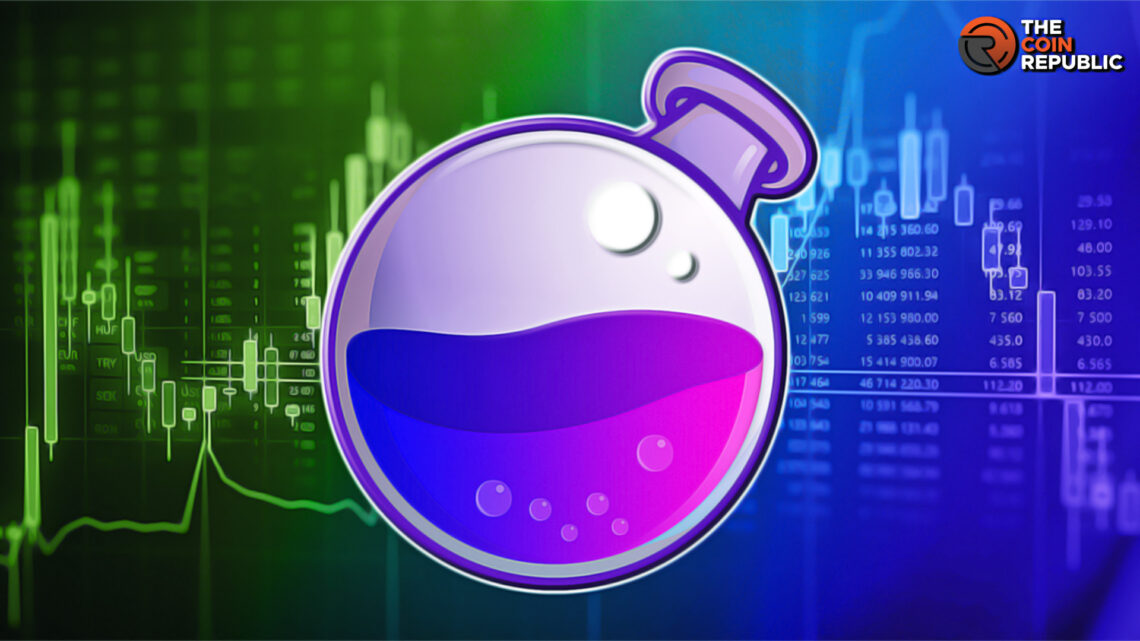- 1 Osmosis is AMM Protocol for interchain assets that permits trading in a permissionless manner.
- 2 It is built to allow the development and management of a self-balancing, non-custodial, interchain token index.
Osmosis is an interchain liquidity lab that provides a decentralized exchange platform for swapping, exchanging, and building on the Cosmos network. It offers tools for building dApps on the network, analyzing liquidity, and governance participation. It is powered by the Cosmosis network. It promotes community growth through various social media platforms.
The automated market maker allows the trading of digital assets in a permissionless and automatic manner. It is focused on improving AMM use by offering tools within the Cosmos ecosystem. Cosmos is the platform for interconnected apps and services developed for a decentralized future.
AMM has become an important part of the DeFi ecosystem. Every new ecosystem has an exchange with liquidity pools to support basic token swaps and the creation of final financial products.
Osmosis is the AMM protocol created using the cosmos SDK. The project was announced in October 2020 and launched on June 19th, 2021. Sunny Agarwal, Josh Lee, and Dev Ojha are the main developers. The protocol enables the user to recapitulate on new customized designs by using the existing liquidity pools and modules already running on the network. It also features the on-chain governance that allows each AMM pool’s stakeholders to control and direct their pools.
It is the first AMM on Cosmos, it offered the ability to trade and earn rewards through liquidity provision. It helps to analyze charts and data on assets and liquidity. The holder of the token gets a chance to explore the proposals and discuss upcoming experiments. The platform also helps to build interchain native apps and smart contracts.
How is Osmosis Unique?
The liquidity pools create the pool and allow users to join whereas Osmosis allows users to create their liquidity pools with unique parameters. When a bunch of coins are locked in a smart contract, then it is called a liquidity pool. The user deposits their currency in these pools they offer a limited number of options such as few changes to the swap fee. This is the strongest model that allows for quick onboarding of users.
However, in the DeFi market, there is a need for such a liquidity pool that reacts to the changes easily. That judges the next step and avoids the losses for liquidity providers. The needed swap fee may change depending on the transaction amount, volume, and volatility.
Osmosis provides a variety of tools with which the user can set and change the parameters of pools depending on the market value. This allows for a superfluid staking consensus protocol. Superfluid staking permits the users to earn rewards while also helping secure the network.
Osmosis Tokenomics
Its native governance token is OSMO. The token holder can stake their OSMO to a specific validator and receive the staking rewards in return. They also receive voting rights as it is the governance token.
At Genesis 100 Million OSMO coins are released. Each year, the amount of OSMO released is cut by a third. 300 Million OSMOs are released in the first year, 200 Million during the second and so on.
The CoinMarketCap data shows that it has a market cap of $308,349,700. It has a circulating supply of 492, 590,761 OSMO. The token has a total supply of 587,378,721 OSMO and has a maximum supply of 1 Billion OSMO.
The token has a fully diluted market cap of $626,023,045. The token has an all-time high of $11.21 on March 04, 2022. It had an all-time low of $0.2239 on October 19, 2023.
Future Plans of Osmosis:
Stableswap: Stableswap AMM is aimed at providing a better swap experience for the liquidity pools with assets of the same price.
Volatility Awareness: Another upcoming feature of the Osmosis network is volatility awareness. This feature will allow the liquidity pools the ability to function as sophisticated market makers by auto-removing liquidity during times of extreme volatility. The volatility awareness is reached in a much easier way on Osmosis than on other blockchains since it already has very low fees which makes position management considerably cheaper.
Autonomy: It is one of the ecosystem-building tools that will facilitate chain conditional execution. It is used for placing orders such as limit orders or stop orders tools.
Bridges: Bridges facilitate cross-network currency integration. There are plans to introduce assets from Solana and Bitcoin, and creation of its own USDC token, which is native to the osmosis ecosystem.
Summary
Osmosis is built to create a much more customizable AMM protocol. It allows for the creation of custom liquidity pools that permit the user to make changes as per the market conditions.

Nancy J. Allen is a crypto enthusiast, with a major in macroeconomics and minor in business statistics. She believes that cryptocurrencies inspire people to be their own banks, and step aside from traditional monetary exchange systems. She is also intrigued by blockchain technology and its functioning. She frequently researches, and posts content on the top altcoins, their theoretical working principles and technical price predictions.


 Home
Home News
News









